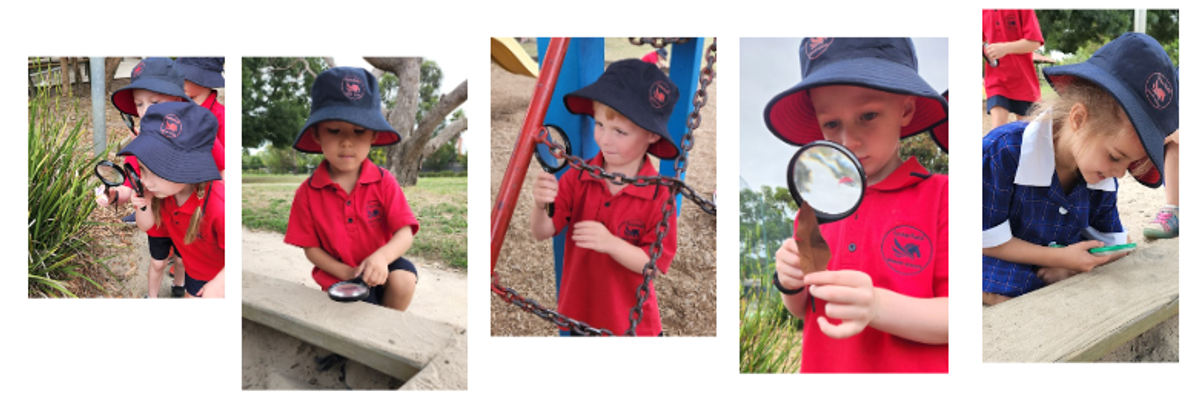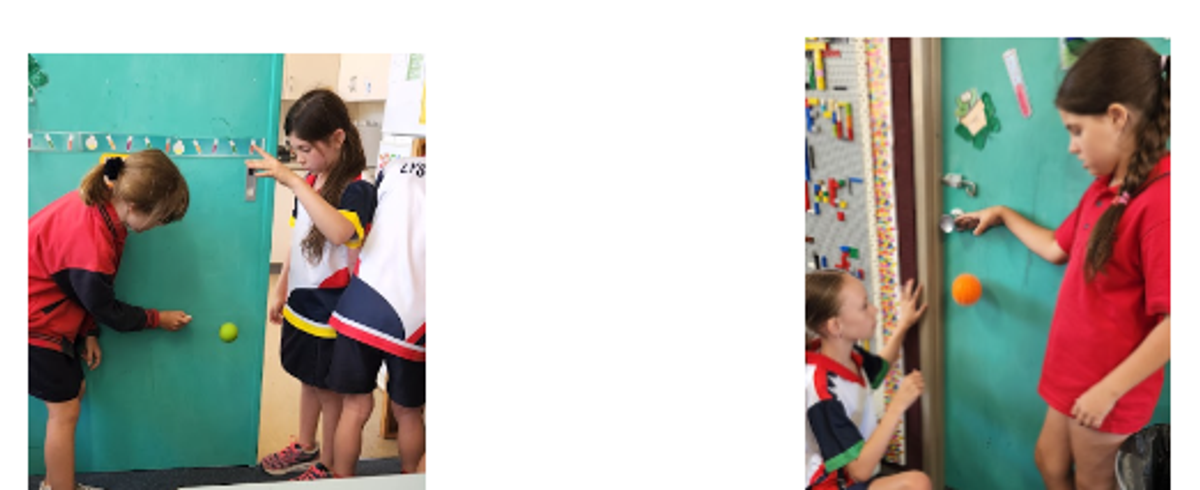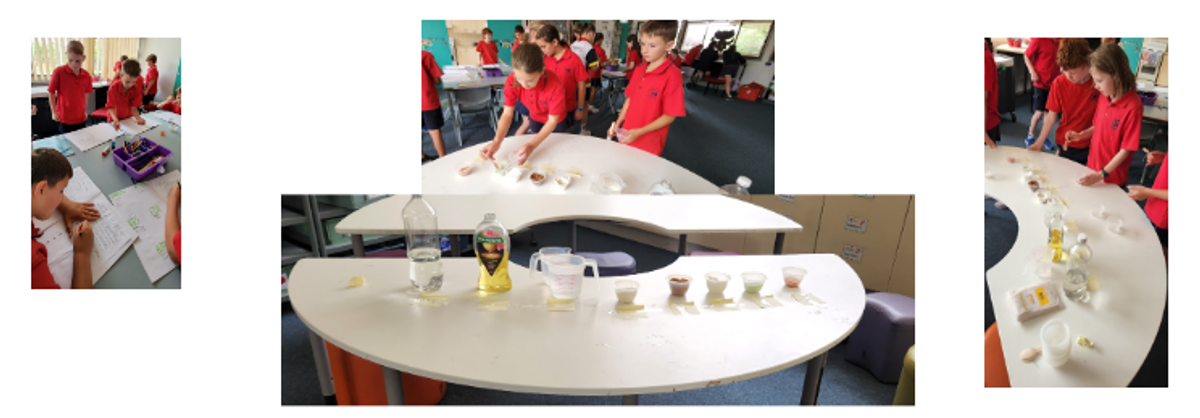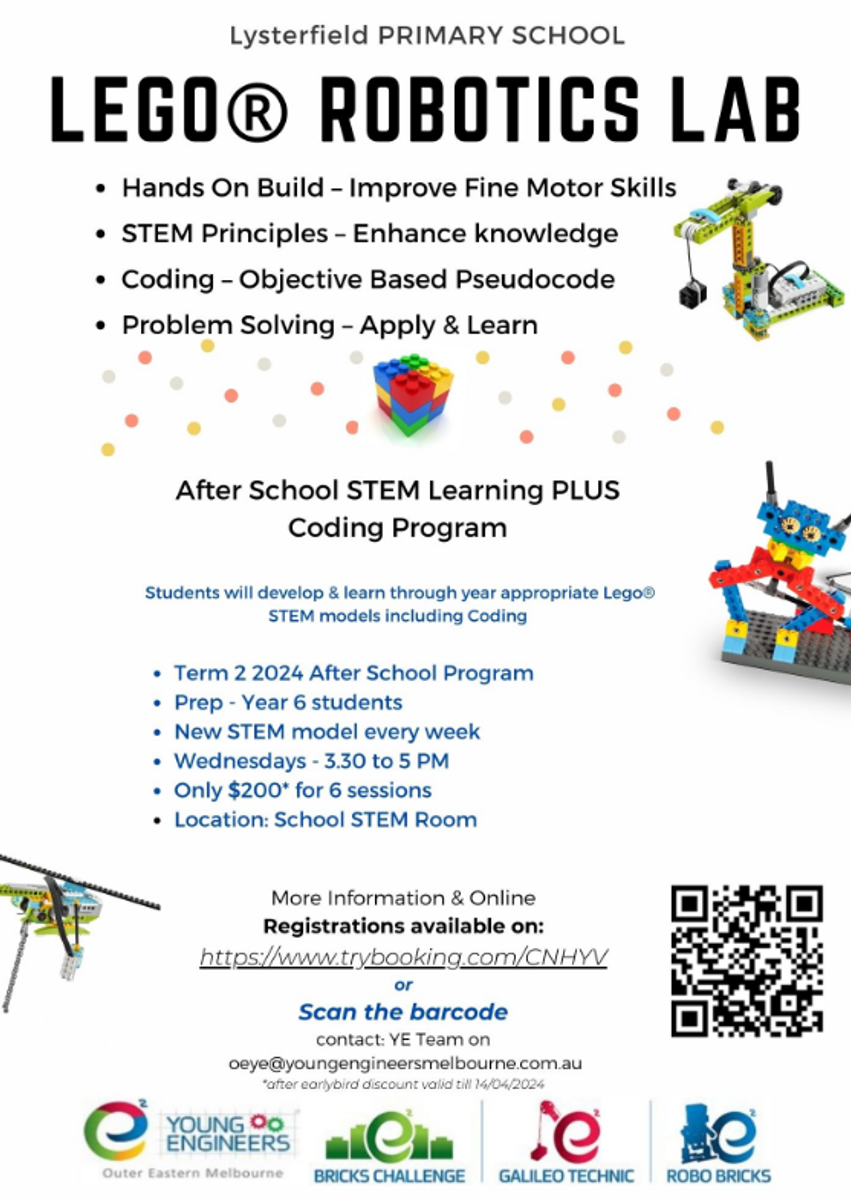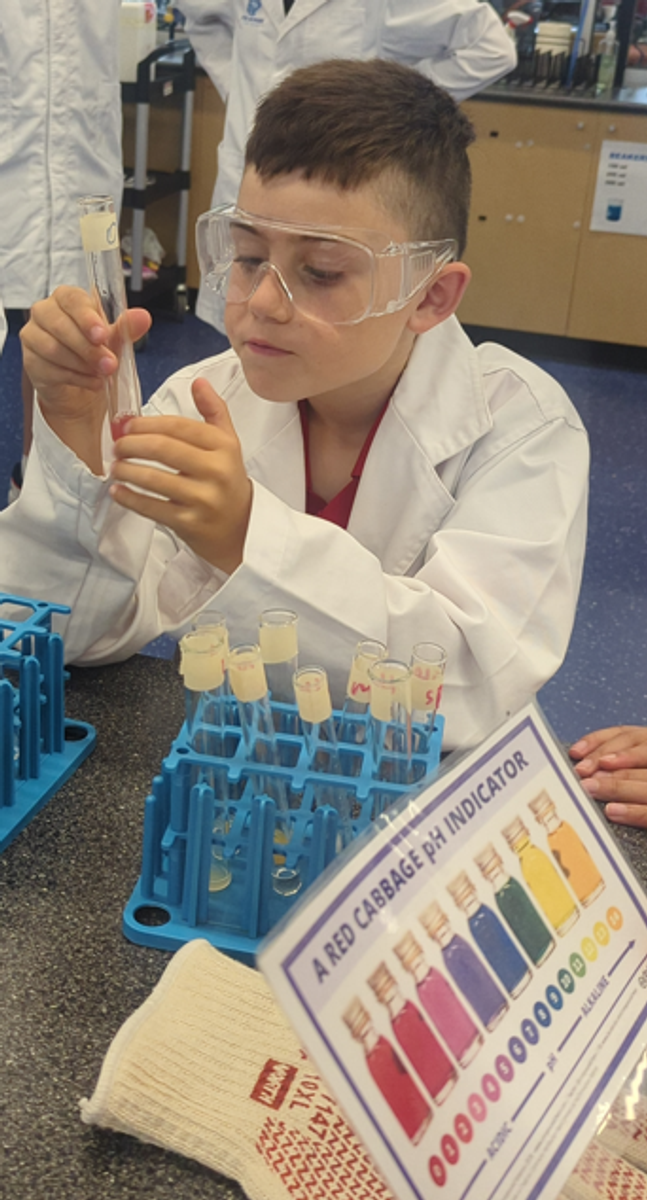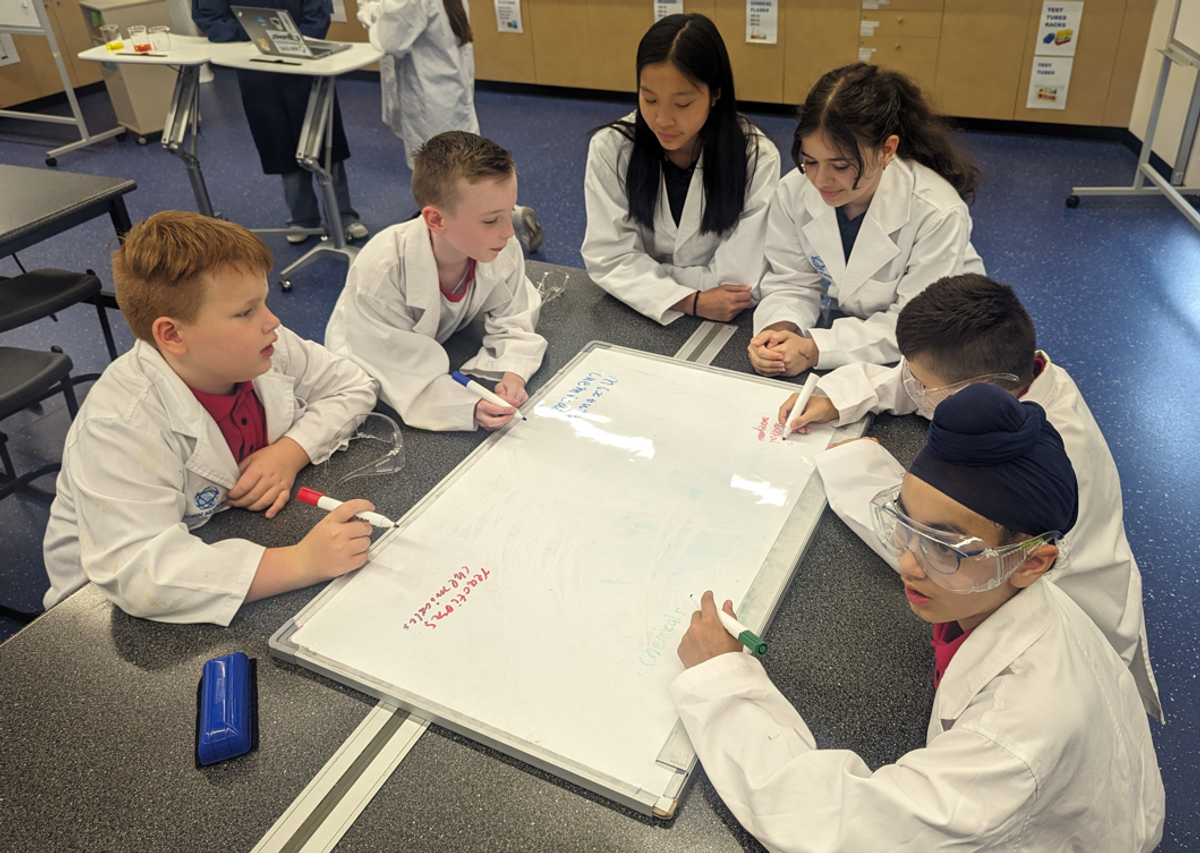STEM

Term 1 in STEM:
We're thrilled to share with you the exciting ways we're bringing the wonders of chemical science into our STEM curriculum here at Lysterfield Primary School. As part of our ongoing commitment to providing our students with enriched, hands-on learning experiences, we're delving into the captivating world of chemistry.
PREP:
In this Prep Science unit students have identified that objects are made of observable properties. Students explored what materials everyday things are made of. Students used a magnifying glass to find and describe objects in their classroom and outside, identifying different objects by their properties (colour and name).
Students have explored the concept that materials can be grouped and sorted according to what they are made from. They then collaborated with a partner, using their senses to question, observe, describe and sort a variety of natural and man made objects. Students then sorted their collected data on a table to communicate their understanding.
JUNIOR SCHOOL:
In this chemical science unit, students have identified that materials can physically change. They investigated physical changes that affect the shape and size of a material. They’ve explored the physical changes in everyday objects in their lives by participating in guided investigations where they used their senses to explore and answer questions.
Students have drawn on their skills to predict and compare how the shapes of objects, made from different materials, can be physically changed through actions such as bending, stretching and twisting. Students observed a range of materials that bend, stretch and twist and they identified these as flexible or elastic materials. Students collected and recorded observations, and used drawings and tables to sort their information.
MIDDLE:
In this unit, students were introduced to the properties of natural and processed materials. They use their sense of hearing to identify different materials and use their sense of sight and touch to describe the materials’ properties. They applied what they have learnt by writing ‘Who am I?’ property clue cards for a partner to solve. Students have also learnt how materials are chosen for specific purposes based on their properties. They explored how materials can be repurposed once they are no longer needed and thought deeply about why this is important.
Students have been introduced to elastic materials. They identified whether familiar objects are made from an elastic material, using a flowchart to help them. They learnt why elastic materials are often used by designers and manufacturers to make balls for sport, and considered what would happen if certain balls were made from alternative materials. Students then conducted an experiment to investigate which sports ball had the highest elasticity (the one that is the bounciest).
SENIOR:
Students have explored reversible and irreversible changes to matter by using common, everyday substances and considering everyday observations. This chemical science unit has provided students with opportunities for some true experimentation, as they created two different types of mixtures – solutions and suspensions. They explored which type of mixtures can be separated by filtration. Scientific skills utilised in these lessons include laboratory skills, such as making a solution or suspension, filtering a mixture, observing, recording results and explaining observations.
Students designed and conducted an experiment to investigate the conditions that promote and inhibit the formation of rust. They considered and controlled variables, recorded and interpreted their results, and evaluated their method.
LEGO Robotics Lab is back in Term 2:
‘Little Scientists, Big Science’
The "Little Scientists, Big Science" program at John Monash Science School (JMSS) is an initiative aimed at fostering scientific curiosity and exploration among younger students, typically in primary school grades. This program extends the school's outreach to young learners, encouraging them to engage with science in a fun and interactive way.
Selected students from grade 4 have had the opportunity to explore and engage with science through the ‘Little Scientists, Big Science’ program. Here is what they have to say about their experience:
‘We made a PH indicator to see what levels of acid base the chemicals/drinks are made of. I had a great time and would definitely recommend doing this experiment at home’. -Jesse
‘We started the day in a big room with the other schools. Then we went upstairs to the ‘lab’ room. There were hot plates on some of the tables and whiteboards on the rest. Aekam, Archie, Jesse and I were at the whiteboard table and wrote down what we thought of when they say ‘base, chemical and acid’. Then we did the cabbage indicator’ - Callum
It started with staff members showing us an universal indicator. Followed by year 10 students showing up slideshows. Then we wrote ideas and followed up by testing liquids with the universal indicator. - Aekam
‘We used a PH indicator to test cabbage and tested the PH level with sprite and milk. It was so much fun!’- Archie
Exciting times ahead in STEM!
We are excited to share some exciting updates about our STEM program! As we continue to inspire and empower our students to explore the wonders of these vital fields, we are reaching out to our wonderful community for support.
Your generosity has always been instrumental in helping us provide enriching educational experiences for our students, and we are once again asking for your support to ensure the success and sustainability of our STEM initiatives.
Your support makes a significant difference to our students' learning opportunities and the success of our STEM program. Here are a few ways you can contribute:
Opportunities to help:
- Donations of Timber/Wood, appropriate for construction E.g. Billy Cart bases or other small vehicles.
- If you own or are a part of a company or business who would be willing to sponsor our engineering program.
- If you have connections with hardware stores/companies, helping us to make contact in order to obtain suitable engineering resources.
- If you have any household STEM-related materials such as; plastic bottles, milk bottle lids, masking tape, balloons, wooden skewers, plastic or paper cups, unwanted CD’s or DVD’s, aluminium foil please drop them off outside the STEM room.
- Construction Crew: If you're handy with tools and have some basic experience in woodwork or mechanics, we would be delighted to have your help in the upcoming terms to assist with our Grade 6 Science and Engineering program. Please email: sophiechamberlain@lysterfieldps.com or melissaadams@lysterfieldps.com
Thank you for your continued support.
Melissa Adams & Sophie Chamberlain
STEM Leaders
Lysterfield Primary School

